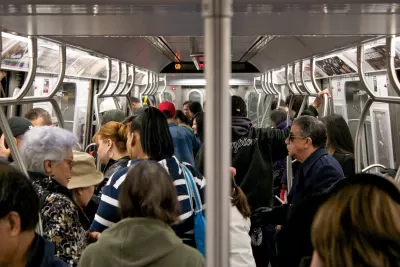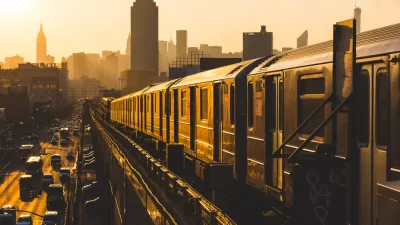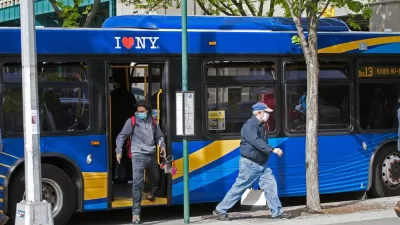The agency plans to negotiate new options for operational funding as farebox and toll revenue lingers far below pre-pandemic levels.

With ridership plateauing at roughly 60 percent of pre-pandemic levels, New York City’s Metropolitan Transportation Authority (MTA) will meet with lawmakers and labor leaders to discuss potential new sources of funding for the agency, which, in the past, depended on ridership revenue for half of its operating costs. If current levels of farebox and toll revenue hold steady, MTA faces a $2.6 billion budget shortfall in 2025, reports Michelle Kaske in Bloomberg CityLab.
According to a quote from Rachael Fauss of Reinvent Albany, “The best case is that they get new, ongoing, dedicated state aid. Not sort of a one-shot thing because the problem of reduced ridership isn’t going away anytime soon.”
Potential options for new funding sources include new sales taxes, a common funding method in other cities such as Los Angeles, where sales taxes make up 80 percent of operational funding. Revenue will also come from the MTA’s planned congestion pricing system, which will launch in late 2023 or 2024.
As Kaske notes, “If the agency doesn’t find new funding it would be forced to reduce service and boost fares higher than already planned. That means commuters would have to pay more to ride and wait longer for trains that break down more often.” MTA board member Andrew Albert rejects the idea, saying “I don’t think cutting service gets us anywhere.” Albert continues, “It then means fewer riders will opt for the system, which means you begin that downward spiral of death -- fewer riders means the deficit grows even more.”
FULL STORY: New York’s MTA Shops for New Funding as Fare Revenue Dwindles

Alabama: Trump Terminates Settlements for Black Communities Harmed By Raw Sewage
Trump deemed the landmark civil rights agreement “illegal DEI and environmental justice policy.”

Planetizen Federal Action Tracker
A weekly monitor of how Trump’s orders and actions are impacting planners and planning in America.

The 120 Year Old Tiny Home Villages That Sheltered San Francisco’s Earthquake Refugees
More than a century ago, San Francisco mobilized to house thousands of residents displaced by the 1906 earthquake. Could their strategy offer a model for the present?

Ken Jennings Launches Transit Web Series
The Jeopardy champ wants you to ride public transit.

BLM To Rescind Public Lands Rule
The change will downgrade conservation, once again putting federal land at risk for mining and other extractive uses.

Indy Neighborhood Group Builds Temporary Multi-Use Path
Community members, aided in part by funding from the city, repurposed a vehicle lane to create a protected bike and pedestrian path for the summer season.
Urban Design for Planners 1: Software Tools
This six-course series explores essential urban design concepts using open source software and equips planners with the tools they need to participate fully in the urban design process.
Planning for Universal Design
Learn the tools for implementing Universal Design in planning regulations.
Clanton & Associates, Inc.
Jessamine County Fiscal Court
Institute for Housing and Urban Development Studies (IHS)
City of Grandview
Harvard GSD Executive Education
Toledo-Lucas County Plan Commissions
Salt Lake City
NYU Wagner Graduate School of Public Service





























